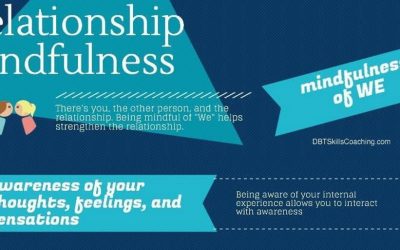Life is full of wonderful moments. It’s also full of painful ones. There’s no choice about many of those painful moments, but how you handle the pain can add to or decrease the emotional suffering in your life.
When situations are overwhelming, you naturally look for ways to defend and protect yourself. You look for ways to lessen the stress and the pain. But sometimes people have coping strategies that offer temporary relief, but make the situation worse in the long run. For example, crawling back into bed when you need to work or when you have commitments with friends. Maybe you overeat or hide from the world, over spend, or drink too much, then feel guilty and ashamed afterward.
Intense emotions can be overwhelming, fatiguing, and cloud your ability to think clearly. Searching and searching for the right solution adds to anxiety and upset. Sometimes, in an effort to take action, people attempt to solve problems that cannot be solved. That only increases the pain they feel. Others become paralyzed, unable to decide what to do and so they just stay in their pain.
As complicated as life problems can be, there are actually only about four general ways to respond effectively. Using a system for addressing difficult situations may help you be more effective in choosing your coping strategies. Dialectical Behavior Therapy, gives four options for any problem that you face: Solve the problem, change your perception of the problem, radically accept the situation, or stay miserable.
Choice 1: Solve the Problem.
There are many problem-solving strategies, but most use the same steps. First, define the problem. Be as specific as possible. Use numbers whenever possible. For example, “I’ve been late for work four days this week.”
Next, analyze the problem. Is it in your power to solve the problem? If not, then consider one of the other three options. If yes, then continue to analyze the problem.
Look at the specifics of the problem. What are the reasons you’ve been late? Is the reason always the same? Does it depend on your mood or what time you went to bed? Does it depend on what tasks you have to do at work? Who you work with? Where you went the night before? Consider the who, what, when, and where of the behavior you want to change.
The third step is to consider possible solutions. Think of various solutions that could solve the problem. Evaluate the solutions carefully to determine which might work best for you. What are the pros and cons of different actions? What could go wrong? What can you do to make the solution more likely to work?
For example, if you have a problem with overspending when you are stressed, you might decide to give yourself a weekly budget. To keep to the budget you might choose to freeze your credit cards in a block of ice, what would you do in case of an emergency? Would giving yourself a certain amount of spending money for the day work better than an amount for the week?
A key variable to remember is how difficult it is to make changes in behavior. A strong commitment to change is important. Be specific in stating the change you want to make. Be willing to make small changes at first.
Implement the solution: Take action. Trouble-shoot as you go along, tweaking it to resolve any issues you didn’t anticipate.
Choice 2: Change Your Perception.
Another way to address problems and stressful situations is to change your perception. An example of changing your perception of a problem might be to see a difficult boss as an opportunity to work on coping with someone who is demanding. If you feel irritated because your house is cluttered with toys, maybe change your perception to one that the clutter is part of having young children in the home, and you love having young children around.
Changing your perception could also mean changing your view of emotion. Instead of trying never to feel anger, look at your frustration as a source of information, perhaps a signal that you need to speak up for yourself. Perhaps it’s a sign to get a different job.
Choice 3: Radically Accept the Situation.
Radical Acceptance means wholeheartedly accepting what is real. Radical acceptance is like saying, “It is what it is,” and giving up your resistance to the situation. Radical acceptance could be about issues we can’t control or concerns that we decide not to change, at least for the time being. It doesn’t mean you agree with what has happened or that you think it is reasonable. Radical acceptance is that of acknowledging what is real and true—such as not getting into the college of your choice, or not being able to take the vacation you wanted, or that someone you love has a serious illness. Instead of fighting against what is unwanted but true, you accept. You also accept the emotions that come too, such as anger and sadness.
Choice 4: Stay Miserable.
if you can’t solve the problem, can’t change your perception, and you aren’t ready to radically accept the situation, then staying miserable is the only option left. Of course, staying miserable is not a choice anyone wants to make, and no one would want to consider it as an option.
Staying miserable may be all you can do in certain situations. Sometimes staying miserable may be what you have to do until you are ready to do something else. This often happens when you don’t like any of the other choices you have. You don’t like the options that solve the problem, you don’t want to or can’t change your perception of the problem, and you don’t accept it. This means you stay stuck. That’s not a pleasant place to be. Consider which is the best option that you have so you’re not stuck in staying miserable.





0 Comments